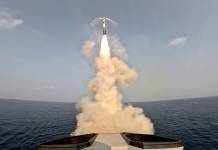In the wake of the latest security threats from Pakistan, India is all set to deploy its Integrated Battle Group at the border. The Integrated Battle Group is a state of the art concept of cross border strike capability initiated by the Chief of Indian Army in December last year. This new deployment will make the borders much securer than ever before and will tackle the perpetual threat emerging from Pakistan, head-on.
RSS Ideology Detrimental To Regional Peace As Imran Khan Blasts Indian Government
According to reports in HT, the Indian ministry of defence has cleared the restructuring of IX Corps, based in Yol in Himachal Pradesh, to form the IBGs to be deployed along the western border. Raised in 2009, IX Corps is one of the army’s youngest corps and is part of the Chandimandir, Haryana-based Western Army Command.
The Integrated Battle Group is more efficient because of its composition and inbuilt units than the other structures. During the war, a Brigade takes time in loading various units including artillery and logistics. This also affects the movement of the Brigade.
The arrangement of IBG is done in such a way that they are capable of performing an aggressive role with the help of the modernized mechanism which consists of powerful tanks to perform cross border operations. The Indian army has four troops which include tanks and artillery guns. In the case of defensive roles, a large number of ground troops are present.
This is used for extending support to the attacking troops in order to defend enemies. The two roles will be analysed by the ministry of defence for the final approval after the proper testing. The top official said: “If the concept works, then we will see where it can be applied. For example, if a division can be divided into two IBGs or a brigade can be upgraded.”
Why India or Vietnam Can Never Replace China As The World’s Manufacturing Hub?
Talking about the restructuring of the Indian Army battalions along the India-Pakistan border, General Bipin Rawat stated that the Indian Army will now be a leaner and meaner fighting unit. He further stated that the restructuring of the Indian Army’s combat capabilities will happen selectively from sector to sector.
Each Integrated Battle Group will be headed by a two-star officer and will have more than the present strength of each brigade that is 3000. The strength, however, would be smaller than that of an entire division which has 10,000 personnel.
The plan of the Indian Army is to have composite Integrated Battalion Groups which will have a mix of five to six battalions to execute conventional combat operations. The idea is to give a boost to the flexibility to the Indian forces.
The present state of relations between the two nuclear states could trigger a war (could even be a small scale) at any moment. Tensions have been heightened since the Balakot strikes and the latest changes made to the constitutional position of Kashmir have further triggered a diplomatic and military standoff between both nations.
Even in general, looking at the new geopolitical challenges India faces, the Integrated Battalion Groups will serve the security interests of India with reassurance.





